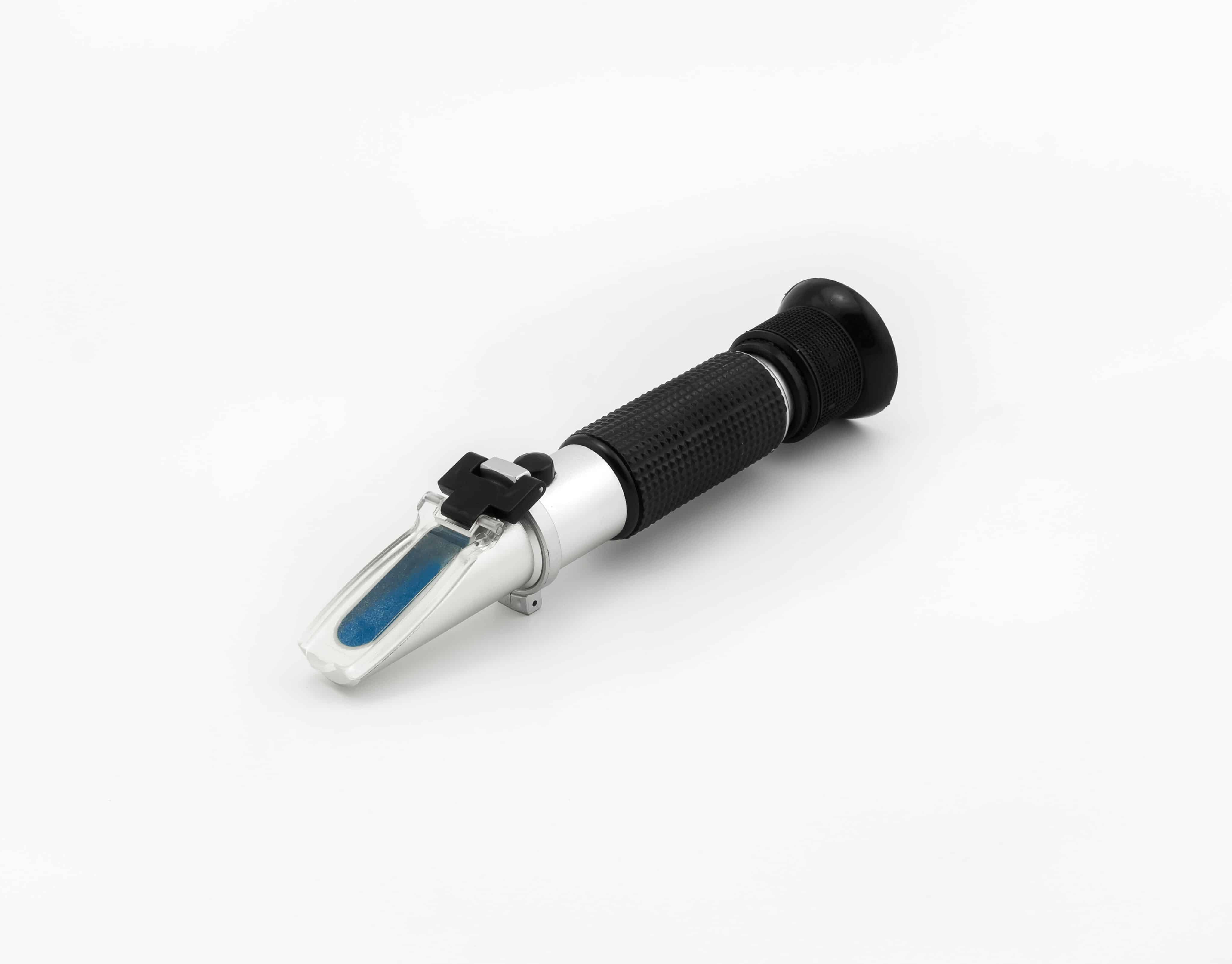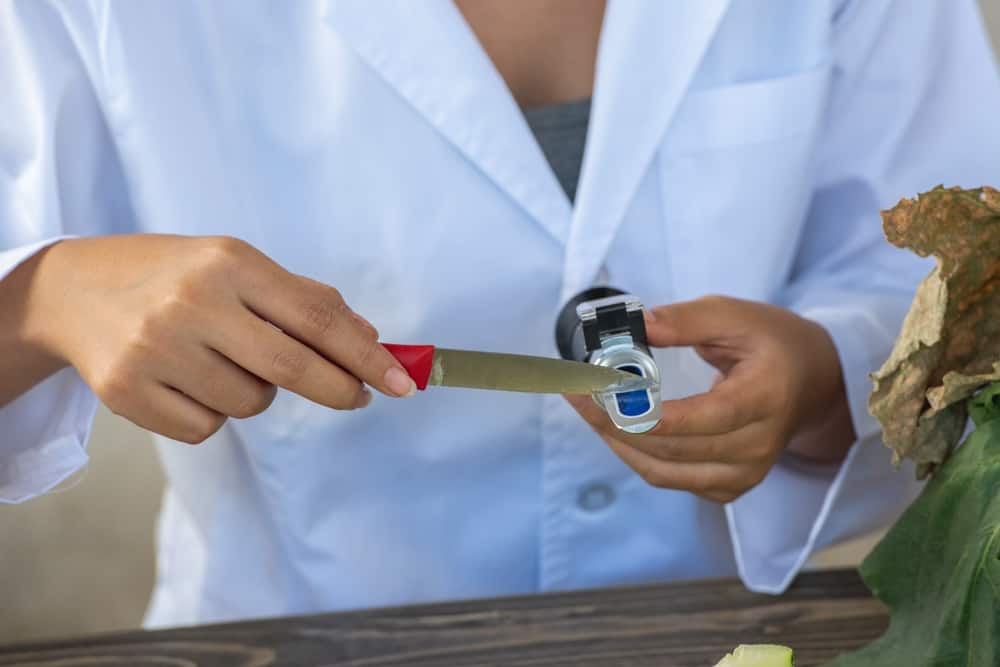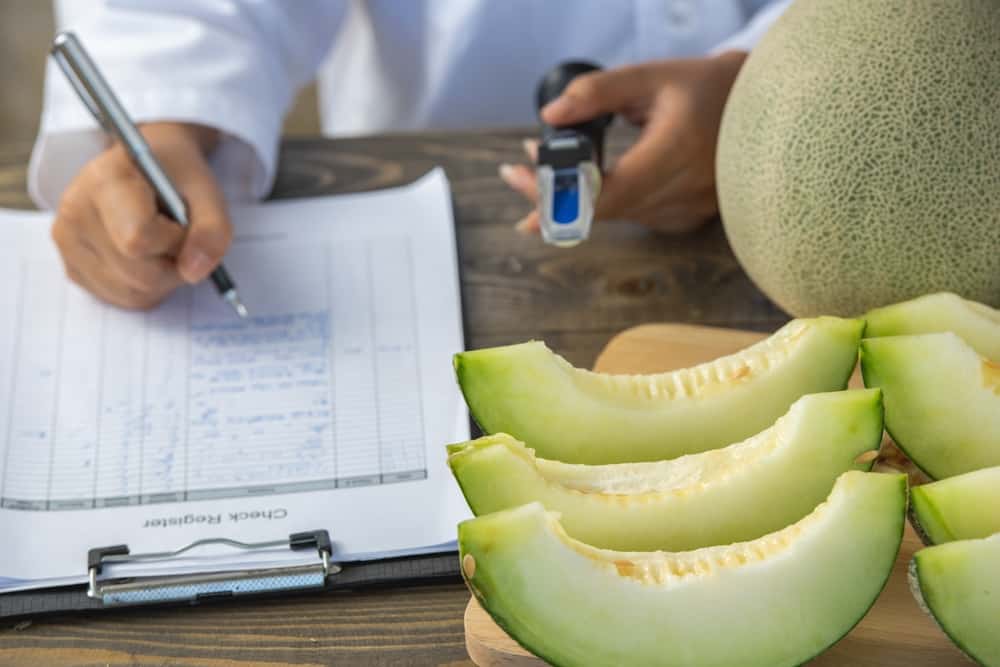
In this day and age, it seems like there are a million gadgets out there to perform all kinds of niche purposes. The Brix refractometer might sound like one of them, but the truth is that this instrument is immensely useful in a variety of circumstances.
If you’ve been searching for a refractometer that can help you, your company, or your loved ones measure the concentration of a certain liquid, look no further. A digital Brix refractometer will be able to help you out. But first, you need to understand what you’re looking at.
What is a refractometer? What is Brix? Are there different kinds of instruments in subcategories that you can use? You’ll be able to answer these questions by the time you’ve finished reading this article. Let’s talk about what makes a Brix refractometer what it is: a highly desirable scientific instrument with high viability in many different situations.

Contents
What Is a Refractometer?
A refractometer is a measuring tool developed to help professionals and consumers check the amount of dissolved solids within a liquid. While this might sound like a vague definition, the only reason this is the case is that such an instrument’s actual number of applications is astronomically large. Scientists, food manufacturers, and amateur chemists can use refractometers for various purposes. There are a few kinds of refractometers, but today we’re talking about Brix refractometers and what they can do.
All refractometers measure how much a solution refracts when light is exposed to it. When light enters a prism, it changes its angle. This is what refraction is. The angle will deviate depending on what kind of prism it goes through. When you pass light through a solution with a certain amount of dissolved solids or liquids, the amount of refraction changes. A refractometer allows the amount of refraction to be viewed via an easily understandable number, or Brix, which can then be compared to an established index of refraction points.
What Is Brix?
Brix refers to the amount of dissolved solids within a liquid. It is most commonly used in food science to determine the sugar content or sucrose inside a liquid sugar solution sample. This obviously comes in handy when companies and scientists are trying to figure out exactly how much sugar is inside a solution – a Brix refractometer allows them to figure that out down to the smallest degree.
Brix is measured in a series of degrees. One Brix degree equals one gram of sucrose in 100 grams of solution, so one Brix is essentially one percent. Knowing this, you’ll have a far easier time understanding how we speak about Brix throughout the rest of this article on the subject. A plant or liquid’s Brix correlates with its tastiness, sweetness, and overall consumability. Certain foods, like soft drinks or juice, commonly have a Brix of one number, while jellies and jams have another number. If soft drinks were to have the Brix of a jar of jam, then it would impact the taste to such a high degree that the beverage would likely be undrinkable.
How to Read a Brix Refractometer
Reading a Brix refractometer isn’t a challenging task as they have been manufactured to be easy to understand. If you’re struggling to comprehend how your Brix refractometer works, then all you need to do is take a look at its instruction manual to see how its functionality differs slightly from most models. Again, most of these work the same, but with some slight differences.
For an optical refractometer, a traditional model that isn’t used quite as frequently today, you simply add a small amount of solution to the refractometer’s holding tray. Once added, you hold the device up to a source of light that is steady and unwavering. Then, you put your eye up to the viewer, and you’ll see a scale with dark parts and white parts. This is where you’ll see the Brix degree calculated and shown to you in a very simple pattern. As you can see, a Brix refractometer is a remarkably easy tool to use and comprehend.
This pattern of use will remain the same for all refractometers you come across, whether handheld models or digital Brix refractometers. They all contain a viewing port that you can access, a tray to hold your sample, and a readable scale that you can see once you hold the device up to a light source.

What’s the Difference Between Refractometer Types?
You might have noticed that we’ve mentioned quite a few different kinds of refractometers in our article today, and there’s a good reason for that – you might come across a few kinds of these instruments. One of the most common types is the 0-32 Brix refractometer, which is a device that allows you to view an instrument’s Brix as long as it stays below 32 degrees.
These are the most common type because they are more affordable, as they don’t need to account for quite as large a measurement scale. However, they are still valuable to your average consumer because they can measure many beverages and foods. Most wines and carbonated beverages measure in at less than 32 degrees Brix, so this type of refractometer is a widely sought-after tool that can be easily utilized even by inexperienced readers.
If you are part of a professional or scientific organization that needs a Brix refractometer, then more consumer-friendly models might not cut it. This makes sense as obviously the Brix scale goes higher than 32 degrees. You might need an inline processing refractometer, which allows you to constantly measure the flow of a liquid and ensure that its contents never go above a certain sucrose concentration. This type of refractometer is highly useful in kitchen environments when you must be positive that the ingredients and foods you’re using are up to par.
Brix Refractometer Calibration
If you’re struggling to figure out how to calibrate your Brix refractometer, have no fear. We’ve got you covered with this simple guide on just how you can go about doing that. While most handheld refractometers will come calibrated, it doesn’t take much to set the calibration out of whack. While these instruments are designed to take a bit of a beating, a hard whack or excessively rough handling can make them difficult to use. It’s also a good idea to calibrate your refractometer occasionally, as even scientific instruments with near-perfect designs can need fine-tuning occasionally. You should also always calibrate a new refractometer, as anything coming right out of the box will likely have a couple of things wrong with it.
If you suspect your Brix refractometer isn’t giving you the proper reading, you can test it by measuring something with a fairly established Brix degree, such as an orange. Most oranges fall within a Brix percentage of 4 to 13 degrees. If your refractometer falls within this range, then you’ll at least know that the device is still functioning correctly. If the device is outside of this range or gives you inconclusive results, then it might be time for either a new refractometer or for the scientific community to convene and determine the Brix of the average orange again.
Most refractometers will either come with a calibration fluid or give their owners a number they can call to obtain some from the original manufacturer. This calibration fluid is designed to give owners a straightforward Brix measurement that they can then reference to determine whether their device is functioning properly.
To calibrate your Brix refractometer, you’ll want to ensure your fluid and your device are at the same temperature. This will prevent your reader from fogging or impairing your measuring process. Then, add a drop of the solution to your device’s prism and adjust the screw on your handheld refractometer until the device reads the number given to you by your refractometer manufacturer.
Remember that this specific calibration process is unique to handheld refractometers, so you might have to go through a slightly different process for other, more advanced tools. However, this process rarely deviates from what we’ve just outlined for your common instrument.
Safety Instructions When Using a Brix Refractometer
Brix refractometers aren’t particularly dangerous instruments, but you should still handle them carefully to avoid any possible injuries or damage to the tools themselves. Here are a few general rules that you should follow when using a Brix refractometer:
- Never get your refractometer wet unless it’s the holding tray specifically designed to contain solutions you are measuring.
- Avoid unwieldy handling, as refractometers are delicate instruments – their readings may be impacted by rough usage or being knocked about.
- Avoid prolonged contact between skin and a piece’s rubber eyeshade, as this may irritate if you have sensitive skin.
- Ensure liquids being measured do not come in contact with your eyes or skin. Sugary or acidic solutions could prove irritating or harmful based on a person’s sensitivity.
- Avoid exposing your Brix refractometer to extreme temperatures, as this could warp the instrument and make it unable to give an accurate reading.
- Use the refractometer in calm environments. If you are bumped while performing a reading, it could cause serious eye injuries.
- Clean your Brix refractometer after each usage. The last thing you want is to have your sugary solutions crystallize within your instrument’s viewing tray.
- Avoid using your Brix refractometer under direct sunlight for extended periods. It’s also recommended that you avoid using it in high humidity.
Brix Refractometers Are Useful Tools
We hope that this guide to understanding, using, and maintaining Brix refractometers will prove helpful to you. These devices can make it much easier to understand the concentration of different solutions and liquids. Whether you’re trying to organize your diet plan or just want to learn more about the foods and drinks available, a Brix refractometer is a handy tool.

